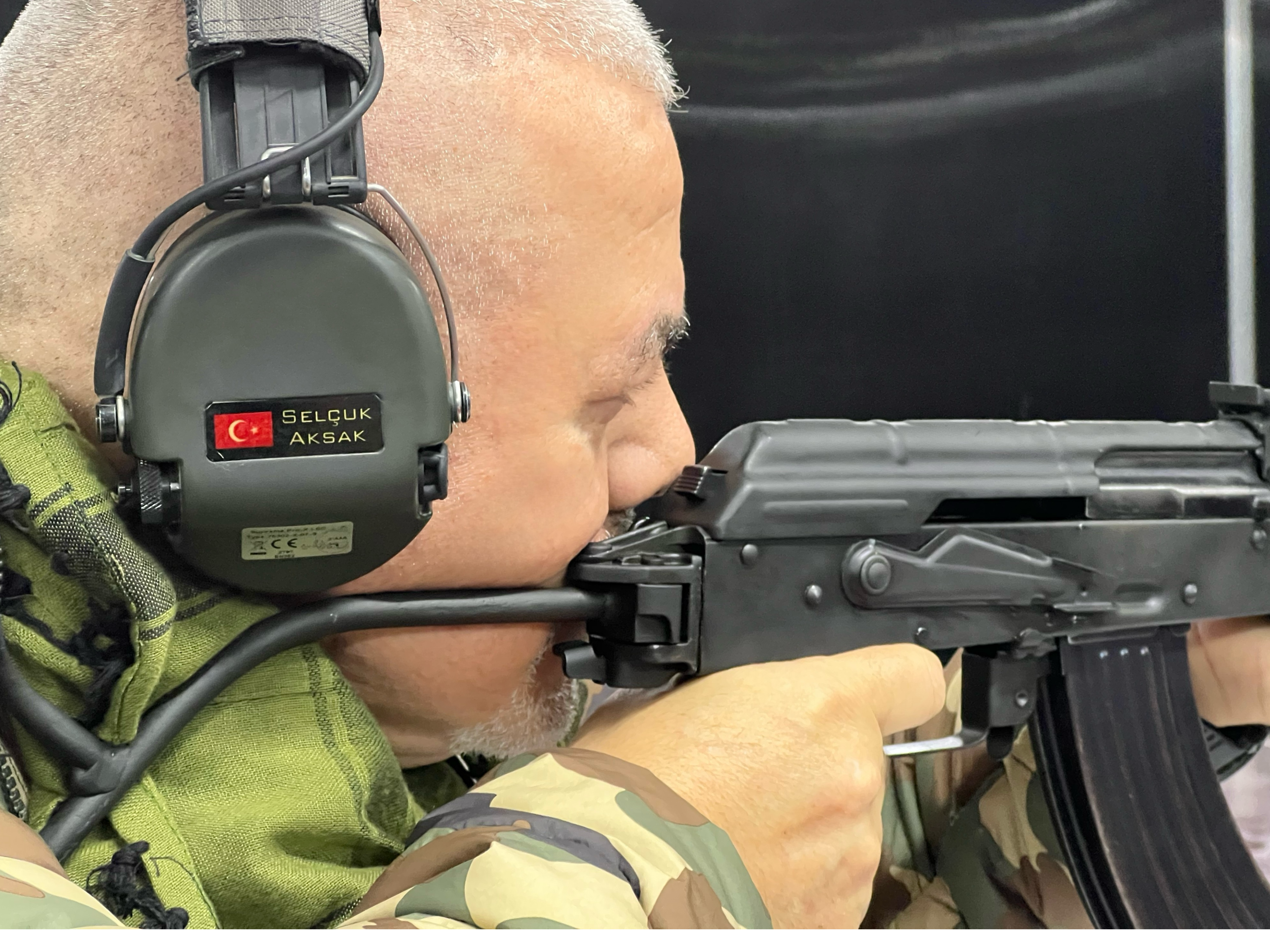Two Essential Techniques in Dynamic Shooting: An In-Depth Analysis of Scoop Draw and Press Check
- Selcuk Aksak
- Apr 30
- 3 min read

Abstract: This article examines the critical impact of the initial contact moment on performance in dynamic shooting. The techniques of scoop draw and press check are analyzed comparatively in terms of biomechanical positioning, reflex timing, and stage scenario context. The role of proper grip engagement on the firearm affecting both accuracy and safety is emphasized. Theoretical assessments are enriched with field observations and competition experience.
1. Introduction Dynamic shooting disciplines require not only proficiency in firearm handling but also demand speed, accuracy, reflex coordination, and tactical reasoning. One of the first actions taken by a shooter upon the Range Officer’s command is drawing the firearm and preparing it for the first shot a process filled with micro-level details that affect performance.
This paper details two specific techniques: the "press check," which confirms the presence of a round in the chamber, and the "scoop draw," designed for high-speed firearm deployment.
Both methods, when properly executed, yield efficient outcomes. However, if misapplied in inappropriate scenarios, they may result in time loss, tactical disadvantages, and suboptimal outcomes.
2. The Press Check Technique: Anatomy of Control The press check involves partially retracting the slide of a semi automatic handgun even when the magazine is loaded to visually or physically verify the chambered round. This technique ensures the firearm is ready under competitive conditions and provides psychological assurance to the shooter.

2.1. Biomechanical Application Principles
The slide is pulled back slightly without disrupting the sight picture.
The shooter positions the “V” between thumb and index finger securely into the beavertail, gaining strong control over the weapon.

Visual confirmation is complemented by tactile feedback when necessary (such as palm heel tapping the slide into place).

2.2. Risks and Mitigation Factors
Over retraction of the slide may eject the round.
In competition scenarios, unnecessary press checks under time pressure may cause delay.

Therefore, especially in dynamic shooting disciplines like IDPA and IPSC, the press check should be conducted only when needed typically under SO supervision.
2.3. Psychological Impact and Conditioned Confidence
Practicing the press check fosters a deliberate control reflex.
Repeated training in a structured environment enhances mental preparedness, turning the technique into a standardized pre-engagement procedure.

3. The Scoop Draw Technique: Balancing Speed and Accuracy Scoop draw deviates from the traditional draw stroke by approaching the grip from a lower angle, scooping the firearm upward in a swift arc directly toward the target. This method can provide millisecond level advantages but proves effective only under very specific conditions.
3.1. Time Advantage: A Data-Driven Perspective
A conventional draw typically takes 0.9–1.1 seconds.
Scoop draw can reduce this to 0.6–0.8 seconds.
However, match statistics suggest that this time gain is relevant only in “stand and shoot” stages.
3.2. Operational Constraints and Decision-Making Challenges
Scoop draw becomes unfeasible if the hands start from alternate positions (e.g., touching barriers, overhead, or kneeling).
It can negatively affect initial target prioritization for example, mistakenly engaging paper targets before required steel.

3.3. Reflex Integration and Muscle Memory
The technique’s efficiency is tightly linked to grip angle and engagement quality.
Muscle memory developed through disciplined repetition is essential.
Misapplication can lead to off-axis muzzle rise and missed first shots.
Additionally, if the draw is performed without establishing a proper grip, the firearm may “dance” in the shooter’s hand during recoil compromising both control and sight alignment, leading to time loss in follow-up shots.
Hand Placement Before the Draw:

Beavertail Mastery Failure to establish a proper grip before drawing the firearm results in inefficiency regardless of technique. Full contact between the hand heel and the beavertail area of the grip is essential.
To achieve this:
The hand must press into the grip, following the principle: “establish the grip first, then draw.”
This step is critical for recoil control and directional stability.
High grip placement helps manage muzzle rise post-shot.
Inadequate grip during the draw weakens hand-firearm interface, risking accuracy and safety.
5. Conclusion and Assessment
Press check and scoop draw serve distinct purposes within dynamic shooting. While the former ensures readiness and confidence, the latter enables time efficiency under specific conditions. Proper hand placement and grip integrity form the foundation of both.
In conclusion, the scientifically informed dynamic shooter must not only master both techniques, but also cultivate the cognitive ability to deploy them reflexively based on real-time tactical requirements. Thus, motor skills and decision-making frameworks should evolve in unison.
Author
Dr. Selçuk Aksak
Shooting Sport Instructor & Coach
IDPA CSO, Gunsmith
Burkut Shooting Club
References
Enos, B. (2020). Practical Shooting Techniques and Draw Mechanics. Enos Press.
Ayoob, M. (2019). Combat Handgunnery. Gun Digest Media.
Anderson, S. (2022). Refinement and Repetition: Dry-Fire Drills for Mastery. Anderson Shooting.
International Defensive Pistol Association (IDPA). (2023). Official Rulebook.
International Practical Shooting Confederation (IPSC). (2023). IPSC Handgun Competition Rules.
AlienGear Holsters. “How to Do a Pistol Press Check.”







Comments